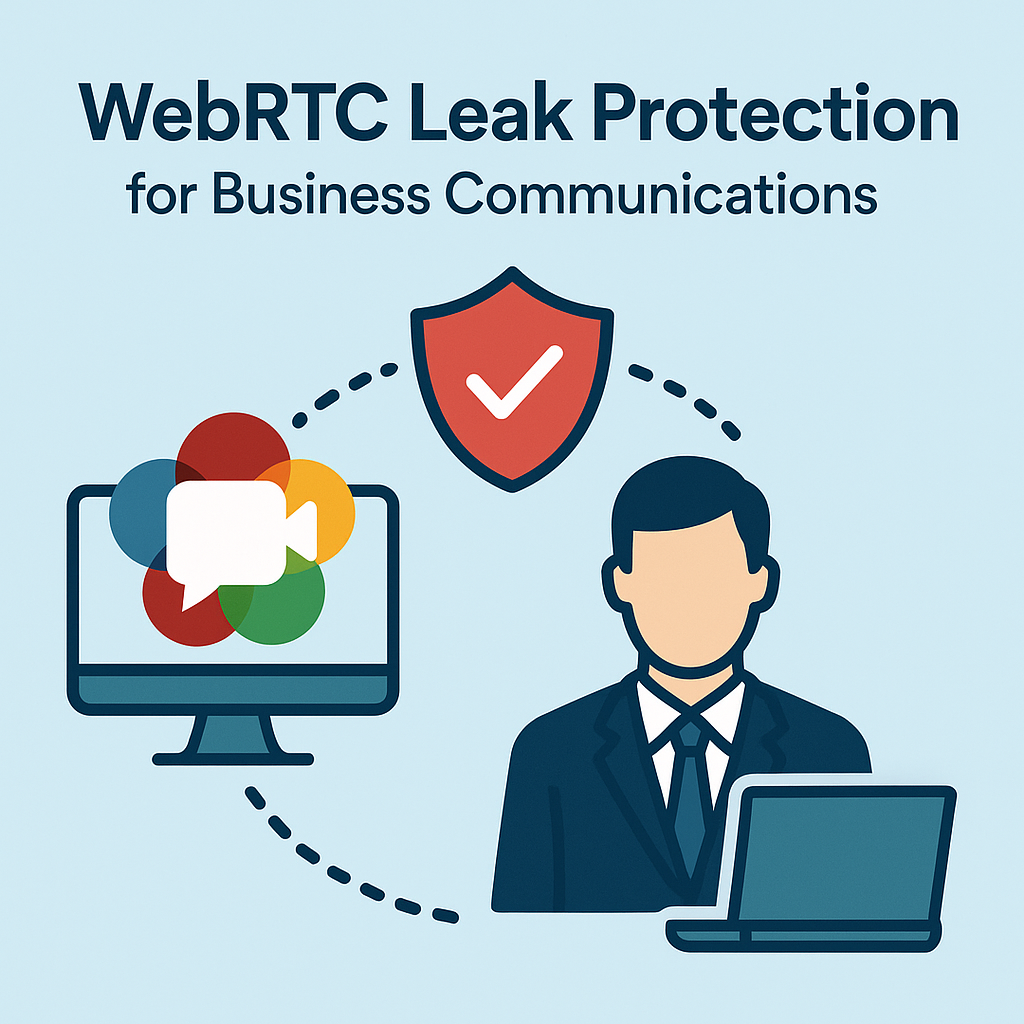
WebRTC Leak Protection for Business Communications
Businesses worldwide increasingly embrace Web Real-Time Communication (WebRTC) as a tech game-changer — but can we blame them? Unbeknownst to most, this innovation powers seamless, high-quality audio, video, and data transmission directly through most web browsers. It transforms corporate communication, powering tools like video conferencing, virtual events, live customer support, and so much more.
The simplicity WebRTC offers helps organizations of all kinds eliminate unnecessary plugins or apps that only slow operations down. This, in turn, gives them the seamless and cost-effective communication they desperately crave when trying to streamline workflows and improve collaboration. However, as with every emerging technology, the increased adoption of WebRTC comes with new risks. Enter WebRTC leaks.
Staying Safe from WebRTC Leaks
When private data inadvertently bypasses security layers like VPNs or firewalls, that’s called a WebRTC leak. This often happens because of the very nature of this impressive technology, which prioritizes seamless connectivity to deliver its promise of real-time communication.
Common causes of WebRTC leaks may include:
- Misconfigured settings in browsers
- Lack of effective VPN integration
- Unsecured network settings on devices
Is WebRTC Leak Protection Crucial for Businesses?
In short, yes. Or else, you could be facing scenarios where hackers could intercept sensitive data or gain unauthorized access to your network. This risk can translate into the following issues:
- Data breaches
- Loss of trust
- Regulatory non-compliance
- Interrupted business continuity
Implementing WebRTC Leak Protection: Best Practices and Tools
Proactively securing against WebRTC leaks is more effective than reacting to incidents. Fortunately, you can take step-by-step actions to implement leak protection effectively without overloading employees with technical complexity. Here’s a quick guide:
1. Identify vulnerabilities
Perform consistent WebRTC leak tests using reliable online tools — like IPRoyal. These can quickly reveal if your IP address is being exposed so that you can act accordingly.
2. Configure Firewalls and VPNs
As you may already know, VPNs can partially mask your IP address. Still, tailoring your firewall policies ensures only authorized WebRTC traffic passes through securely.
Pro Tip: Verify that your VPN is compatible with WebRTC traffic to avoid accidental leaks.
3. Educate Employees
Train your workforce to recognize the potential risks of WebRTC leaks. Provide them with guidelines for safe browsing practices and caution them against unauthorized WebRTC-based platforms.
4. Use Browser Extensions
When you’re not using your WebRTC-powered tools, it’s best to turn this technology off to play it safe. If that sounds like a hassle, there are browser extensions for Chrome and Firefox that take care of this for you in the background.
5. Monitor Network Traffic
You also need to keep an eye out for suspicious WebRTC activity at all times — you know, to stay on top of things.Take advantage of network monitoring tools to detect suspicious traffic patterns.
6. Keep Software Up-to-Date
Outdated WebRTC components are some of the primary targets for attackers and cybercriminals. That’s why you should take special care of patching all vulnerabilities as soon as updates come out. This will help you make sure your defenses are always strong.
7. Segment WebRTC Traffic and Encrypt Communications
When in doubt, use network segmentation to isolate WebRTC traffic. This action is the best way to prevent unauthorized users from accessing sensitive communications. Implement end-to-end encryption or data masking tools to protect transmitted information. This scrambles messages before they leave your device and only reveals the information to the intended recipients.
8. Enforce Access Controls Based on Least Privilege
You should limit WebRTC access to a “need-to-use” basis among applications and employees. This minimizes possible areas of intrusion and provides greater control over communication security.
Moving Forward with WebRTC Testing
Are you already using WebRTC technology in your communications strategy? Nicely done! Now all you need to do is proactively address potential leaks before they become an issue — that is, if you’d like to harness the full benefits of this technology. Don’t forget to perform regular WebRTC leak tests and other measures like employee education and robust IT policies. This serves as a very important first step toward a more secure infrastructure.
Security doesn’t have to be the most overwhelming challenge of them all, though. If you follow the guide above, you’ll soon strike the perfect balance between real-time efficiency and long-term security.
